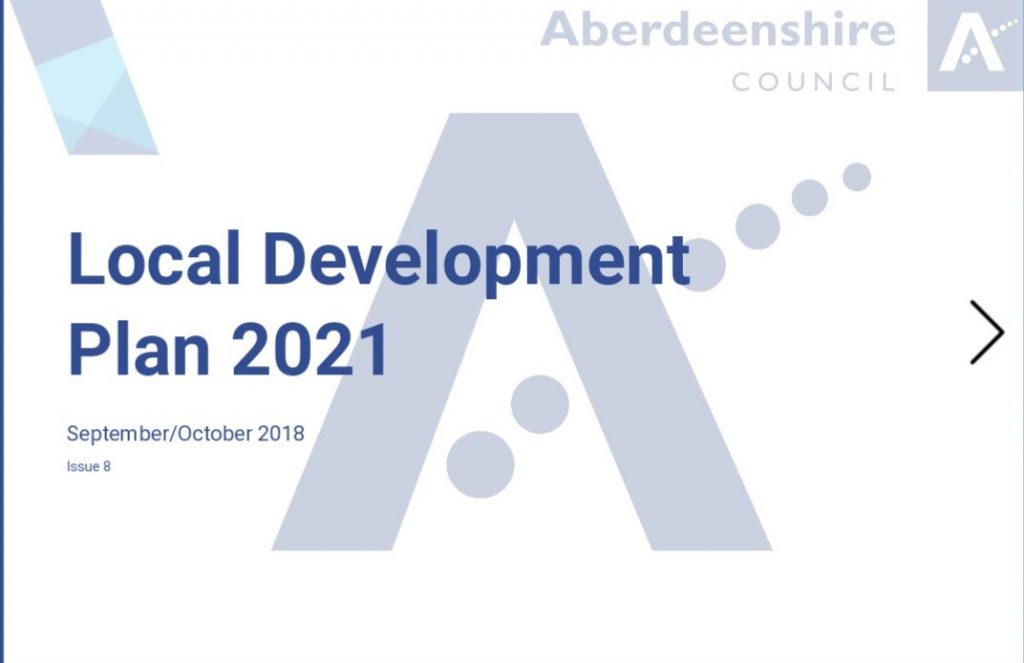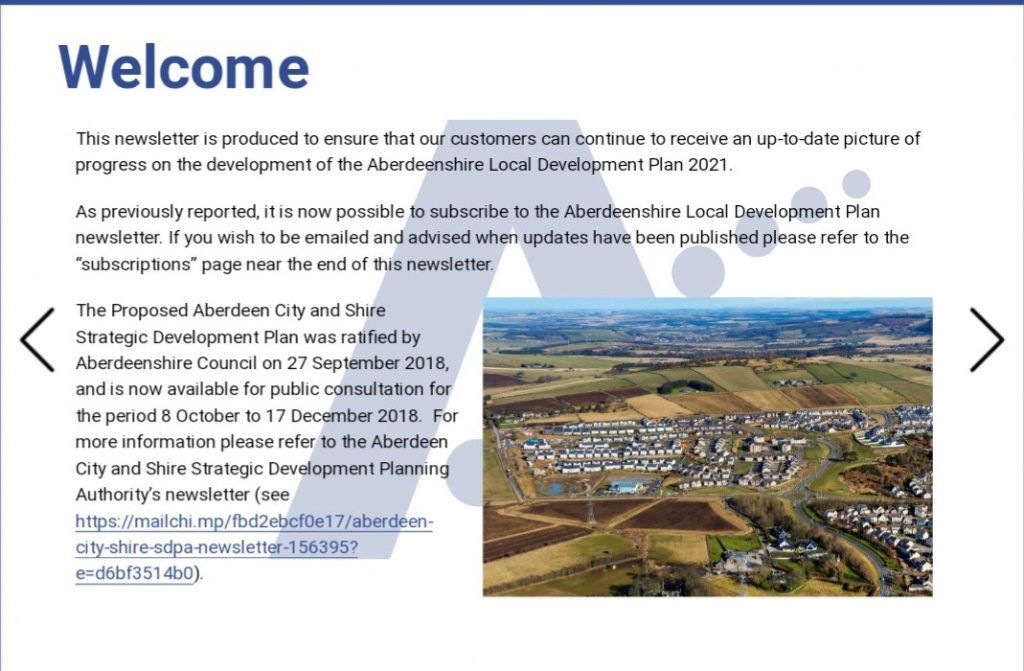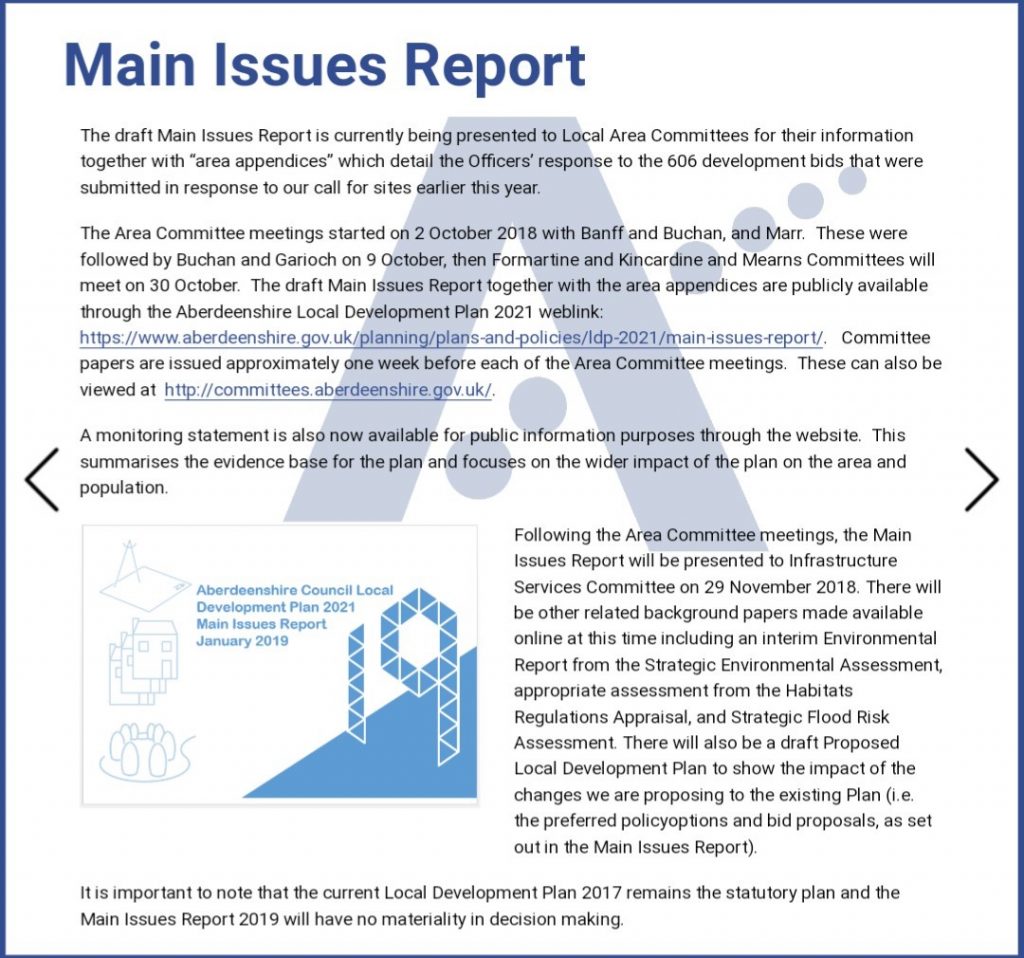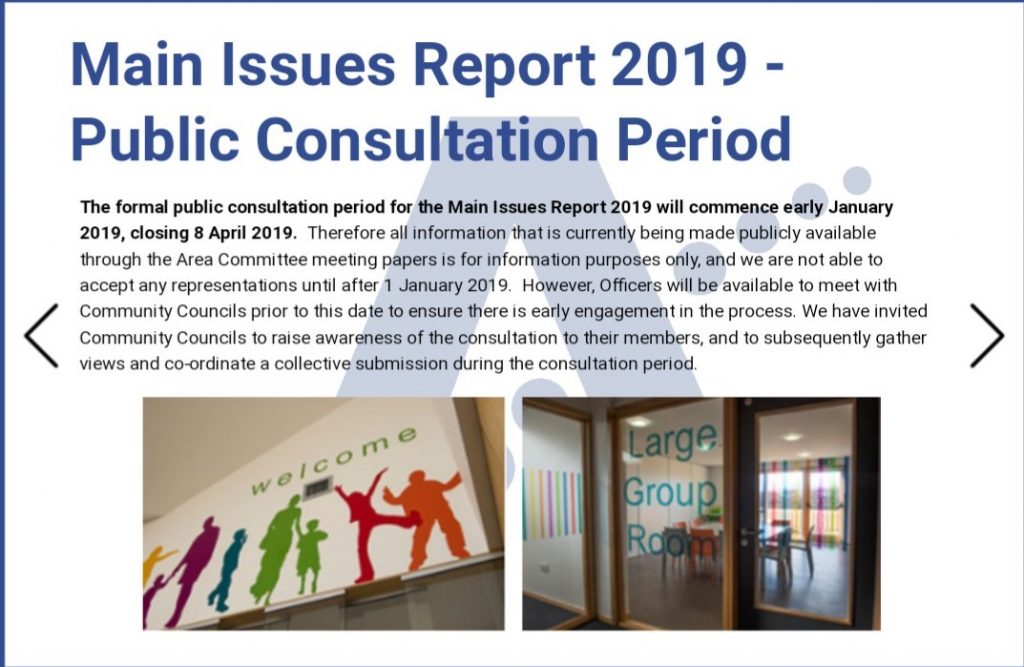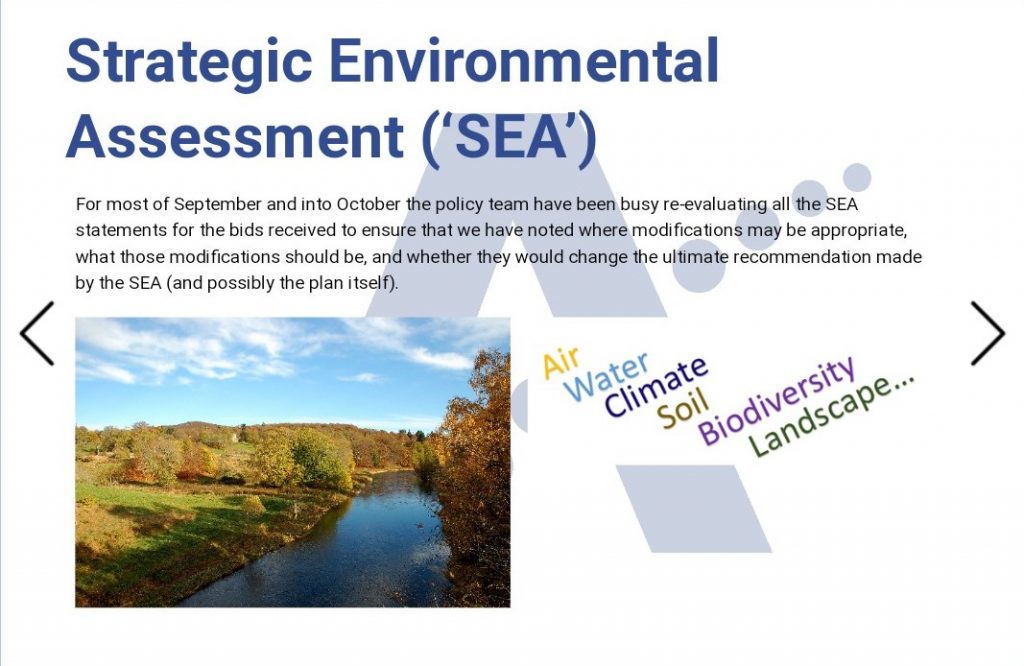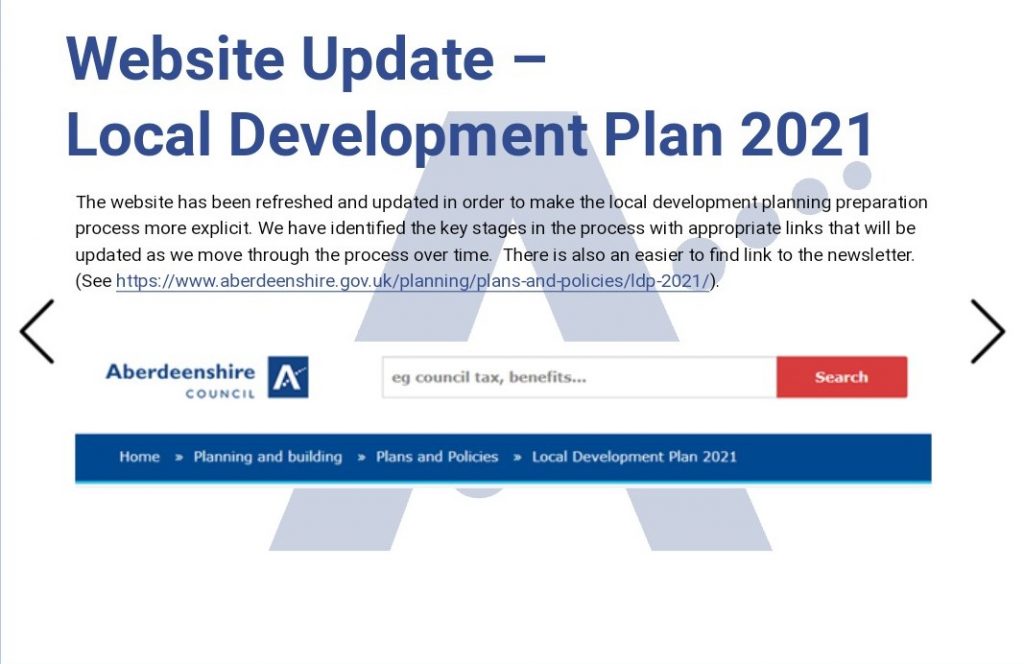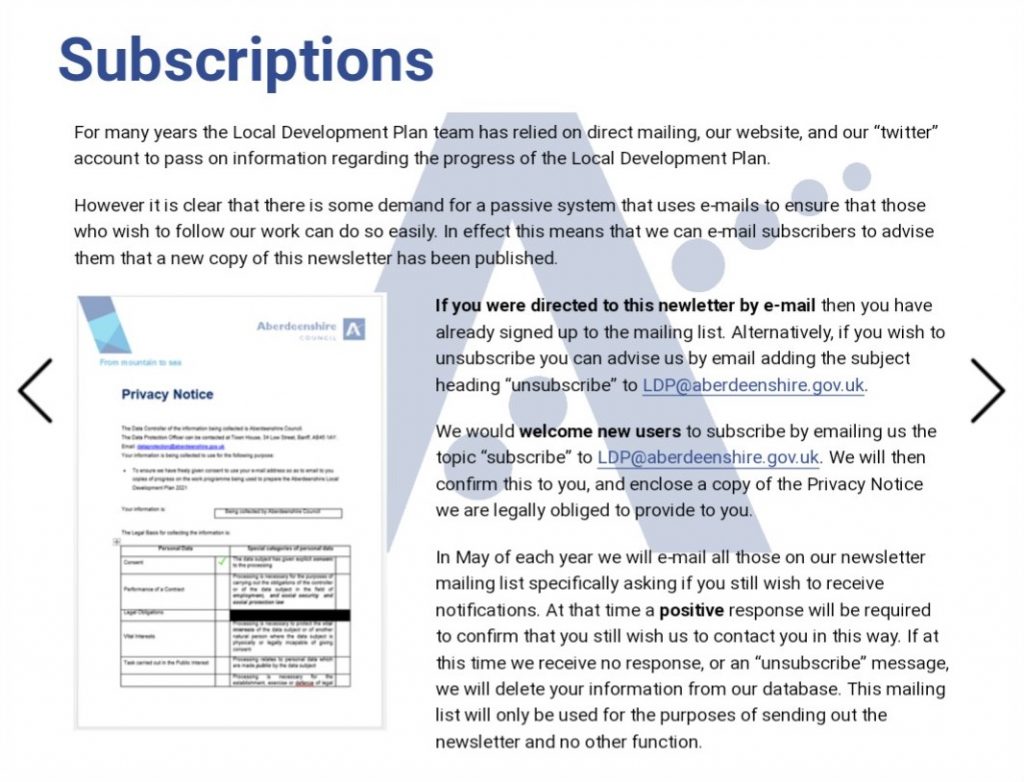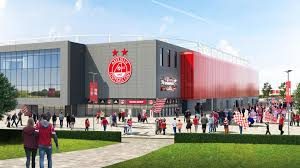
The “Strategic Development Planning Authority” (SDPA) was designated by Scottish Ministers on 25 June 2008 under the Planning etc. (Scotland) Act 2006. The Aberdeen City and Shire SDPA have 12 members with six being appointed by both Aberdeen City and Aberdeenshire Councils.
Their observations and policy conclusions on the AFC stadium proposal are documented below. Although the response has been online for some weeks, it was before SDPA members yesterday for noting. With so many documents online, it can be time-consuming to find the statutory consultee responses.
SDPA CONSULTATION RESPONSE
PLANNING PROPOSAL
Local planning authority: Aberdeen City Council
Proposal: Proposed Community and Sports Facilities, Football Academy, (comprising outdoor pitches, pavilion, ancillary buildings), Stadium (20,000 capacity), ancillary uses, formation of access roads, parking and associated landscaping and engineering works | Land At West Kingsford (North Of The A944 Road) Skene Road Aberdeen AB15 8QR
Reference No: 170021/DPP Date received: 16 January 2017
Case Officer: Garfield Prentice Target date: 27 February 2017
STRATEGIC PLANNING OBSERVATIONS
Context
An application for detailed planning permission has been submitted on behalf of Aberdeen Football Club. The application seeks approval for a football stadium and campus development on an unallocated site forming part of the Aberdeen City Greenbelt to the west of the AWPR junction between Kingswells and Westhill. The proposed development would comprise:
20,000 seater football stadium
- A football academy
- Training pitches
- Car parking for 1,600 cars
- Ancillary retail (merchandising and match day concessions)
The stadium capacity is similar in scale to the current stadium (Pittodrie) and that for a community stadium allocated at OP59 in Loirston in the Aberdeen Local Development Plan 2012 (and 2017) on which Aberdeen City Council were minded to grant consent until the application was withdrawn.
Strategic Development Plan
The Aberdeen City and Shire Strategic Development Plan (SDP) was approved by Scottish Ministers on 28 March 2014, replacing the Aberdeen City and Shire Structure Plan (2009). The Aberdeen Local Development Plan (2017) was adopted on 20 January 2017. The development plan for Aberdeen City is therefore fully up-to-date. The plan is framed around a vision, spatial strategy and a series of aims and objectives; with those relating to economic growth, sustainable mixed communities, quality of environment and accessibility being the most relevant to this application. The SDP sets a strong framework for investment decisions. The purpose of the SDP is to focus the right development in the right places and to prevent inappropriate and poorly located development. The SDP is ambitious in its strategy for change, facilitating growth in focused places in order to deliver the significant and properly planned infrastructure required for this growth (SDP paras 3.5 and 3.9), while enhancing quality of life. In terms of the plan’s spatial strategy (p8- 23), the proposed stadium falls within the outer edge of the Aberdeen City “Strategic Growth
Area” (p12-14). The plan explicitly supports the principle of the development of “a new community stadium, a regionally important facility which will bring economic, social and cultural benefits” (para 3.24, Diagram – p13 and Schedule 2). Two possible locations are identified – on and around the current stadium site at Pittodrie / Kings Links and to the south of the city as part of the Loirston development.
It is recognised that the development proposal is attractive to and tries to meet the needs of the football community of the region. However, it is the principle of a new, single-purpose stadium (for football use and surrounded by ancillary football facilities), on an unallocated site, in the greenbelt which on the edge of the city that is the primary focus of this response.
Spatial Strategy
The SDP acknowledges the importance of Aberdeen City Centre as being vital to the economic future of the area (SDP para 3.21). The regeneration of the City Centre and a number of city communities is vital to reduce inequality (paras 3.47 and 3.48). A key facet of this is acknowledging that a varied mix of uses must be maintained and expanded in order to have a successful city which is attractive to business, residents and tourists. The importance of reducing travel distances and making walking, cycling and public transport more attractive is also highlighted as vital for the future (para 3.16). This again focuses attention on the City Centre or sites that are well connected to existing or planned communities.
Para 3.24 of the SDP details two possible locations for a Community Stadiums to support the growing sporting infrastructure of the city. This is further illustrated in the indicative diagram 5, p13. The careful consideration of the location of a community stadium was part of not only the SDP development process but the Aberdeen LDP. The SDP aims for the development of a Community Stadium which would facilitate more than one use on site and as such co-locate multiple uses at one facility that would be better connected to existing or proposed infrastructure than the single use and isolated proposed development. Specific sites have been allocated for this use within the spatial framework and to locate a stadium of this size and singular use on an unallocated site in the greenbelt, on the outer fringes of planned development corridors would be contrary to both the SDP and Aberdeen LDP. It is noted in the supporting Environmental Statement (ES) that the previously considered
Loirston and Bellfield Farm sites were located in areas designated as Greenbelt at the time of determination. However, this is misleading as the Loirston site was part of a new community coming through the Aberdeen Local Development Plan (2012) and Bellfield farm was considered under a specific policy in the 2001 Structure Plan relating to the SFA’s bid for Euro 2008. The policy context for the current application is therefore very different. It is also claimed that the AWPR would facilitate development at this location. The purpose of the AWPR is not to facilitate development rather alleviate traffic congestion in the greater Aberdeen area. A 20,000 plus capacity stadium on the periphery of Aberdeen City’s road network and public transportation routes is unlikely to make the best use of existing and planned transportation infrastructure. In a similar vein the ES states the stadium would be designed to the highest sustainability standards yet fails to mention given its location how heavily car dependent it would be, thus neutralising any gains made through greener technologies on site. The ES asserts the stadium would improve quality of life. Again this is debatable given the level of traffic that would be generated on match days and at peak commuting times placing increased pressure on the immediate area’s infrastructure. In addition to that it would only be accessible for pedestrians from Westhill given the AWPR forming a barrier to pedestrian and cyclist movement from Kingswells which is the only other adjacent neighbouring community.
Economic Growth
With regard to economic growth the SDP seeks to grow and diversify the economy. However, the applicant’s claim that the development of a football stadium at this location would help to provide a new range of employment that would also help to diversify the regional economy, moving it away from the oil and gas sector, is unfounded. The vast majority of job creation would be in construction, and therefore temporary. While additional employment is welcome, 30 jobs is difficult to class as a shift in employment base. It is also unclear from the supporting Economic Statement as to whether these jobs would be a net gain or a shift from the existing stadium at Pittodrie to the new stadium at Kingsford. However, no account appears to have been taken of either the fact that jobs will be transferring from one of the most economically disadvantaged parts of the City to a significantly more affluent one, or of pre and post-match revenue spent in the vicinity of Pittodrie or the wider city centre – with very limited opportunities for such expenditure in the vicinity of the application site. The issue of ‘Net Economic Benefit’ is covered in more detail below.
Sustainable Mixed Communities
It would appear that the proposal is for a football stadium rather than a community stadium as envisaged at the time of the preparation of the SDP (and previous structure plan) which identified potential stadium locations (SDP para 3.24) as a component of a broader mixed community. While it is recognised that there will be community access to some of the football facilities, the uses proposed are not integrated in a sustainable fashion into the community given the scale of the development and its proximity to established or planned developments.
Quality of the Environment
The Greenbelt around Aberdeen plays a vital role in protecting the character and landscape setting of the city and adjoining communities (para 4.31). Development of this site would remove the protection afforded by the designation and lead to coalescence between Westhill and Kingswells.
Accessibility
While the application sits on the edge of one of the plan’s ‘Strategic Growth Areas’, it is not within or adjacent to either the City Centre or other defined town or neighbourhood centres and has the potential to impact on the City Centre which is afforded significant protection within the plan. This issue will be considered in more detail below in terms of sequential site selection.
The objective of the SDP is to ensure all new development contributes towards reducing the need to travel by car and encourage walking, cycling and public transport – a target of the plan being that walking, cycling and public transport should be attractive options. This location will be a significant traffic generating use in a location only served by public transport between the City Centre and Westhill. It will have a limited residential walk-in catchment and would create further danger on the Aberdeen-west cycle route (with three entry points to the site), which needs to be further upgraded (although it is recognised that there are proposals to upgrade this).
The accompanying Transport Assessment (TA) proposes a number of measures to manage the potential traffic congestion such as overflow parking being accommodated within the Arnhall Business Park. However, it is difficult to see how the development could mitigate its impact in this location when (according to the TA) over 20% of supporters currently travel to the stadium on foot and this is likely to fall dramatically at the Kingsford site. If thousands of cars were to be parked at the nearby employment areas this would give rise to thousands of pedestrians trying to cross the A944 dual carriageway immediately before and after matches. The proposal would create a car dependant development in an area served by limited public transport and an almost non-existent walking catchment. As such it would not be in keeping with the objectives and targets of the SDP.
Scottish Planning Policy (SPP)
Uses that attract a significant number of visitors should generally be located in town and city centres and paragraphs 58 and 59 of SPP place a strong emphasis on the health and vibrancy of town centres, placing the right development in the right places. As such a town centre first approach is taken by the SDP and the Aberdeen LDP. A mix of uses is important in order to attract visitors and should be encouraged in order to have a variety of uses resulting in a more resilient centre. Furthermore the sequential town centre first approach of SPP para 68 would place developments which generate significant footfall firstly in established areas and require justification as to the lack of suitable locations for a similar development in these locations.
The supporting ES chapter 4 (as required in para 73 of SPP), discusses why the out-of-centreproposed location is considered acceptable. Analysis has been undertaken of alternative sites but restricted to those within the Aberdeen City Council boundary, despite the SDP explicitly seeing the ‘Community Stadium’ as a regional facility (SDP Schedule 2). Such an artificial restriction on potential sites in the sequential assessment is inappropriate. All allocated sites, those with previous permissions and possible alternatives have been discounted in the assessment. Multiple reasons have been given with a reoccurring issue being site size, due to the area required for the ancillary components of the proposal the applicant believes it is difficult to find a non-greenfield site within Aberdeen City with sufficient space. In the analysis of the Loirston site (15ha) it is claimed that there is insufficient space on site for training facilities when in fact the site (before the application was withdrawn) was minded to be granted consent by Aberdeen City Council for a stadium and training facilities. It has not been articulated sufficiently as to why such a scale of facilities is required and also the need for it to be co-located with a stadium. Redeveloping Pittodrie is viewed as in conflict with the existing residential use of the area even though the stadium has been in existence for over 100 years. Reasons against developing Kings Links are the loss of the golf course and land being Common Good. All development will encounter issues that required solutions and negotiation, many more complex than the above.
The analysis does not sufficiently justify why the co-location of the stadium and training facilities is necessary and that a standalone stadium could not be accommodate on a sequentially preferable site. Training facilities could be located on an alternative site within the City or Shire. This would negate the need for such a large site and the need to develop within the greenbelt detached from the built-up area of the city. Indeed, the strategy of developing separate sites was being pursued by Aberdeen Football Club until very recently.
In summary, the justification for the current proposal is particularly weak. The Scottish Government has issued draft guidance in order to assess a potential development’s net economic benefit. Para 29 of SPP requires due consideration be given to net economic benefit of a proposed development. The Scottish planning system supports economically, environmentally and socially sustainable places and achieving the right development in the right place. The applicant’s supporting Socio-Economic Impact Statement focuses on the proposal’s employment creation, gross and net, in the Kingsford area. It concludes that there would be a net generation of 30 jobs post construction and over a 25 year period that the net additional GVA generated could equate to £14m at the Kingsford level and £108m at the Aberdeen City level (including construction costs). While the document discusses the net gain to the Kingsford area it doesn’t address displacement of jobs from the Seaton area which is in the 20% most deprived areas in Scotland (Scottish Index of Multiple Deprivation). In addition, Seaton is subject to a Community Locality Plan (a component of the Community Planning system) in order to promote regeneration in the area. The impact of the relocation on the area around the current stadium is not addressed. Added to this, there is also likely to be a loss of match day revenue from this area and the wider City Centre which is not directly considered in the economic assessment. As a consequence, the economic assessment does not present a realistic picture of the impact of stadium relocation to this site.
OTHER OBSERVATIONS AND POLICY CONCLUSION
Improving and modernising the facilities of Aberdeen Football Club are supported by the SDP, as is the provision of community facilities. However, this application is contrary to the Aberdeen City and Shire Strategic Development Plan (2014), which is up-to-date and relevant to this application. The proposal will result in the loss of greenbelt land, the coalescence of urban areas, inappropriately located development giving rise to unsustainable travel patterns and have a negative impact on the City Centre in terms of its mix of uses and lost revenue. The applicant has not adequately justified why the stadium and training pitches etc need to be co-located or why sequentially preferable sites have been dismissed as unsuitable. The applicant claims that the net economic benefit of the proposal is a material consideration.
However, the attempt to demonstrate what the net economic benefit would be seem to neglect the loss of jobs in a deprived area. Various gross and net figures are quoted in the economic assessment but without stating the loss to the existing community of Seaton or of match-day expenditure in the city. Draft guidance on assessing net economic benefit in the planning system was issued in early 2016 by the Scottish Government, but no account appears to have been taken of this. Without a proper assessment, it is not clear what the net economic impact of the proposal might be. The strong framework for investment decisions set by the SDP (SDP Aims, p6) requires strong decision-making on applications which clearly contradict the strategy of the plan. The application is in an unsustainable location in that it will have a very small catchment in terms of access by walking, cycling and public transport compared to other sequentially preferable sites. It does not follow the sequential town centre first approach of SPP or accord with the aims and objectives of the SDP.


